Washing clothes during your trip saves luggage space. For families with children, whether in diapers or not, it is a necessity. And in Japan, there are plenty of places to help you wash up. Just look for ”coin laundry” signs.
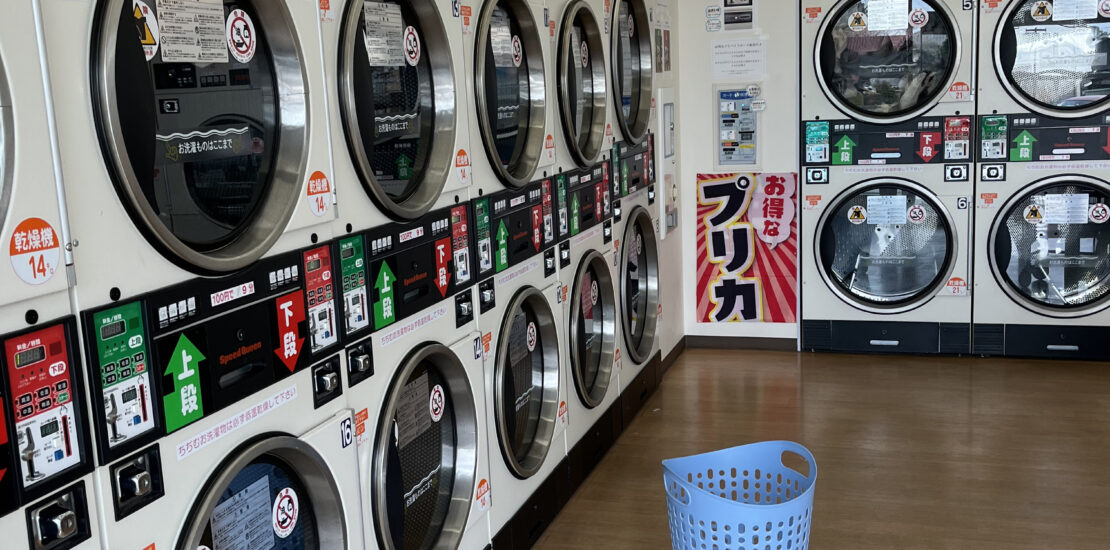
The ”coin laundry” or コインランドリー is your best friend when it comes to saving space for your souvenirs in the luggage and still feel fresh during the day.
For families with children, whether they still are in diapers or not, washing up now and then is a necessity of life. Spills happen, toilet disasters too. And if your children are preschool age, it is useful to know that one of the favorite playground activities in Japanese preschools and managed playgrounds is “doroasobi” – literally, playing in the mud. You can guess how hard the washing machine has to work after that.
Check where to wash and dry
When you decide where to stay, check where you can wash your clothes. Many hotels offer washing machines; check if they come with dryers, as the traditional Japanese way of drying your laundry is to hang it outside. There is even a section in the weather forecast telling you whether the weather will be friendly to hanging out your laundry to dry.
Quite often, there is only a single washing machine, and there will be a line for it. Especially in summer, when the weather is hot and everybody sweats a lot. Don’t worry about deodorant, it works only for a few minutes. But make sure to stay hydrated (so you can sweat to survive the heat).
Wash out your sweat
So it makes sense to find out where else nearby you can wash your clothes. And Japan has plenty of laundromats (or coin laundries, as they are called, in Japaneseコインランドリー). There is one every five hundred meters in Tokyo, somewhat less frequent in the suburbs, where people will drive to supermarkets, hairdressers – and laundromats.
To find the nearest coin laundry, just put in “coin laundry near me” in the search bar on Google Maps or other location system (although it is not certain that the results are equally good in systems who have not invested as heavily in machine translation). If you write “laundromat near me” the result will include dry cleaners (クリニック), but it is hardly useful to you – different from the launderettes, they are not open 24 hours; and they take a day to finish.
24 hour self-service
Most laundromats in Japan are open 24 hours, and they are completely self-service. There is no attendant, and best case there is a phone number to call. But on the other hand, there is very little that can go wrong, if you follow the instructions.
Apart from the instructions on the machines and in the laundry room itself, there are two things to remember. Both apply to your washer and dryer at home, but many people tend to forget them.
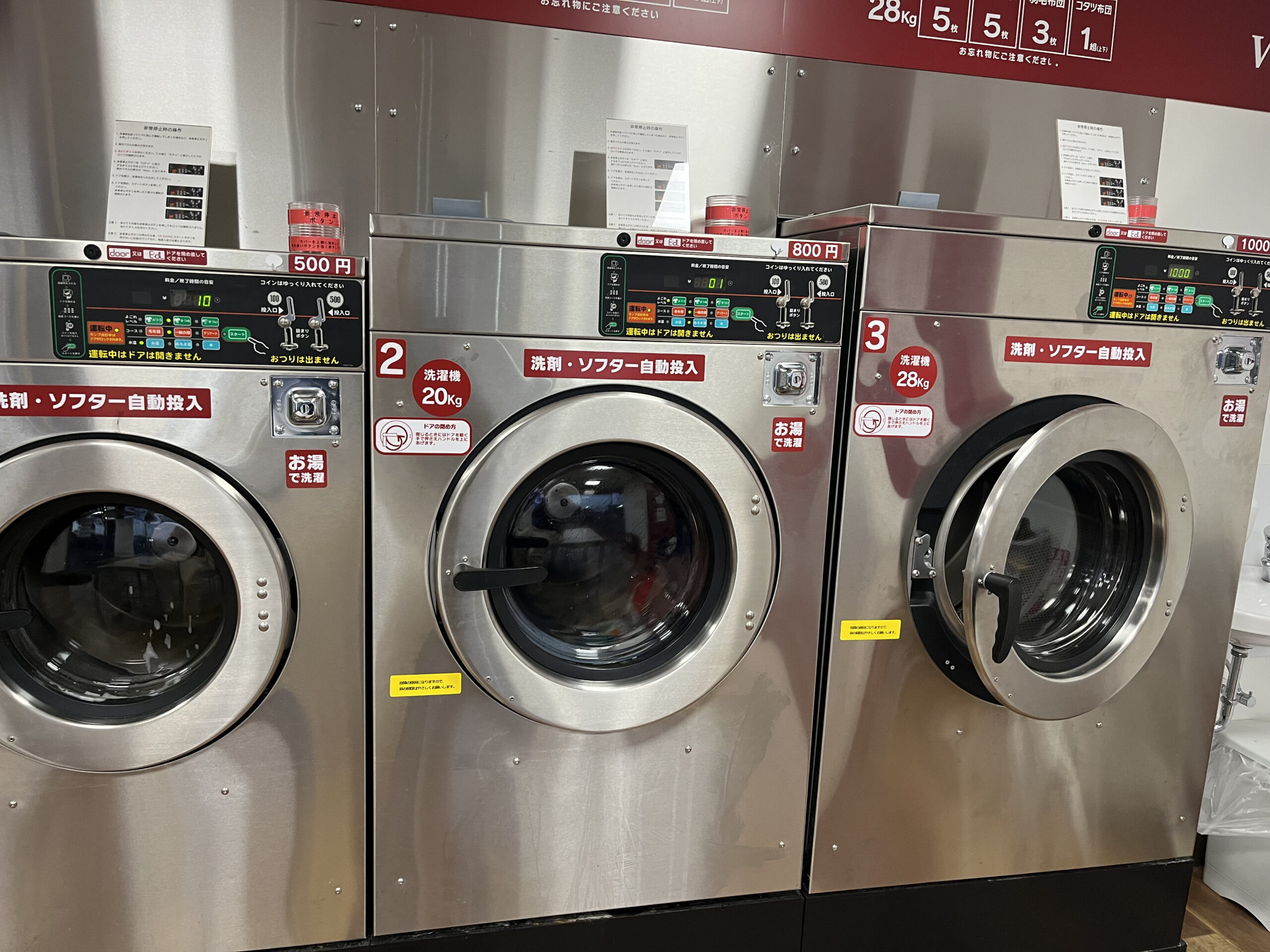
The first thing to remember is that except for the very biggest heavy-duty washing machines, Japanese home laundry typically means washing things with rather little detergent in cold water. Many washing machines for home use are delivered with an electric pump to suck the warm(ish) water from the bathtub into the washing machine, and use it for laundry. Japanese homes typically have the bath next to the laundry room, so you do not need a very strong pump or long hose. And since everyone who takes a bath will wash themselves with soap thoroughly before getting into the bath, the bathwater will be almost as clean as water from the tap.
Bathhouse laundromats
This is of course not feasible in public laundromats, even if many of them are located close to, or even next to, public bathhouses. The owners used to leverage the access to hot water (artificially heated, in the case of Tokyo), but today the bathhouses have more often than not closed down, and the laundromats survived. It is hard to compete with a hot bath at home, when you can take it at any random hour.

Most family homes actually have a small washing machine at home, so you will find launderettes with small washing machines only in areas where most of the apartments are one-room apartments. Since people usually wash at home and hang their laundry on the balcony, they do not need the washing machines in the laundromats as often as they used to; the price of a new, small washing machine is also so low that the convenience of having it outweighs the cost. Hanging laundry on the balcony also counters a common problem: Theft of underwear. While this is not common, it is common enough to creep especially women out, so they try to avoid the coin laundries for personal things.
Industrial washing machines
As a result, the machines in the coin laundries are less and less commonly washing machines for a personal load, and more and mote often industrial machines. The laundromats in Japan are more or less the only places you will find front-loaded drum-type washing machines (most homes have toploaded washers). And typically, they can handle industrial volumes of laundry. Up to 25 kilos load are not uncommon, with the smallest machines handling 8 kilos. This is more than a normal family laundry load, usually used when washing up the winter coats, blankets or duvets.
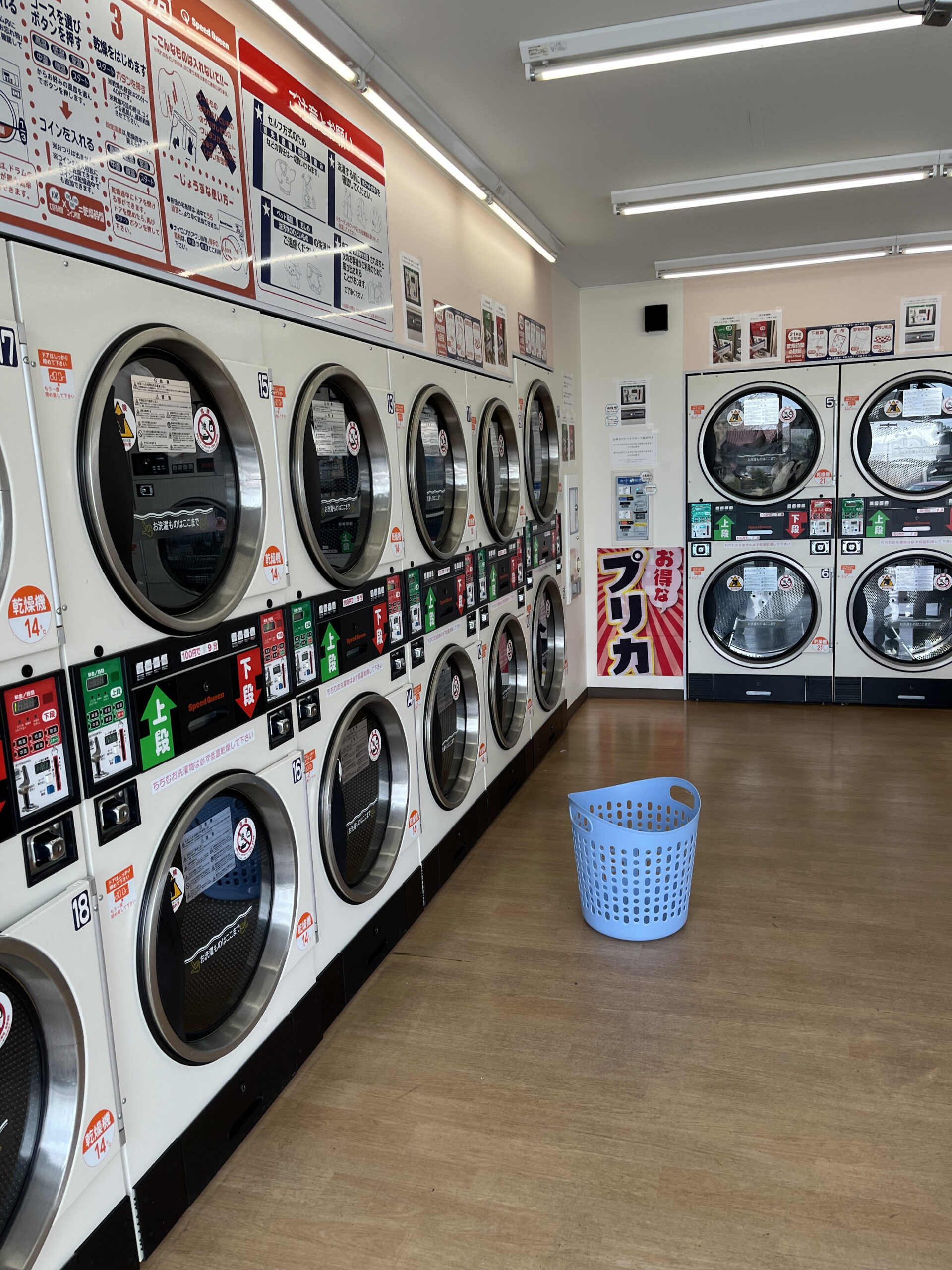
The washing machines in the laundromats not only feed themselves with laundry soap; they also ionize the water, making it chemically reactive and more effective in removing stains. Incidentally, this is the same process used for ionizing water used in the products toured as a beauty and wellness drink.
Dryers for indoor moisture
Many houses, especially newer houses, are built for the air to be closed in and not circulate; this means moisture is retained in the rooms, leading to dampness and mold. To avoid this, you have to dry out your futons and blankets regularly, especially in summer. Summer is also when there can be torrents of rain during typhoons, or without the storm conditions. Especially during the rainy season at the end of may to beginning of July, wet conditions are common, with rains extending for days on end. Hanging things on the balcony leaves them soggier than when you took them out of the washing machine.
That is when people use the dryers in the laundromats; a typical coin laundry has more dryers than washing machines, and they are big. The smallest will take 5 kg laundry loads; the bigger up to 15 kg. These dryers not only spin the loads in huge drums circulating the air through them; the air is also heated by a gas burner, blowing hot air through the laundry load as it spins. And when I say hot air, it is closer to a volcanic eruption than a parliamentary debate. Letting your laundry spin for 20 minutes not only makes the laundry dry as bone; it also makes it too hot to touch. When using the dryers, be careful not to touch any metal parts immediately after taking out the laundry.
Put your money in the right slot
The dryers in a Japanese coin laundry are typically either stacked on top of each other, or one single big dryer to a column. They are activated by feeding coins into a slot, and you have to be careful to put in the coins in the right machine (the upper 上 or lower 下). Since the machine licks while it spins, you can not stop it once it gets going. If you happen to put in money in the upper dryer with your load in the lower, you will lose your money unless you react fast and realize your error. Better to check before you put in money.
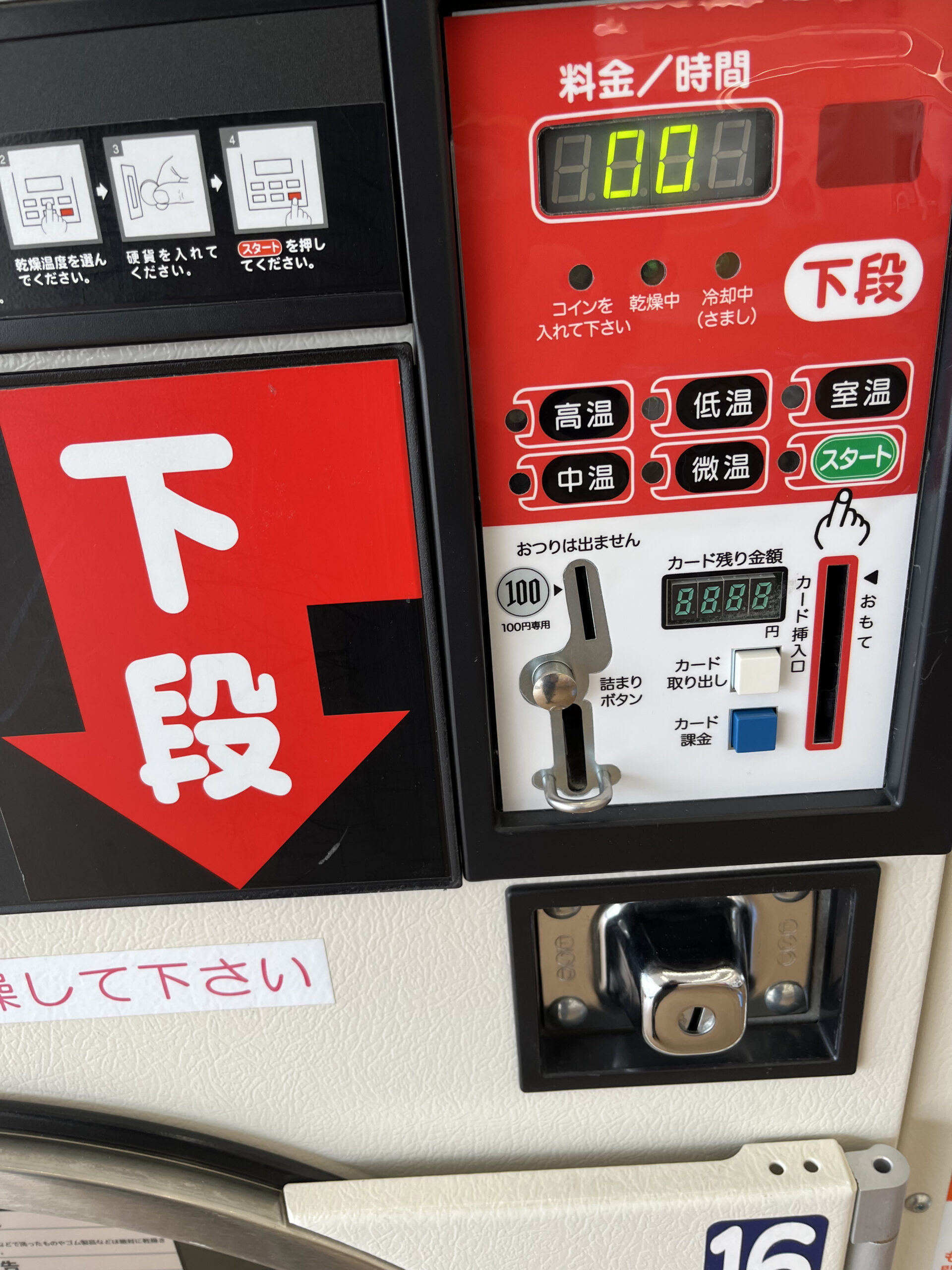
It usually takes about 20 minutes to dry a normal family load of clothes; but this will of course vary depending on what you are drying and how much. If your clothes are not dry after 20 minutes, take out the dry things and give anything still damp or moist another 10 minutes, which is usually enough.
Application controlled machines
Some launderettes do not only have coin slots, but can also be controlled by an app for iPhone or Android. This of course assumes that you have a Japanese phone number, but you can get by just putting in the address of the hotel.
The reason this is something you want to consider is in case you are going to do frequent loads, and will get – and use – points for your laundry. Often, it is also cheaper for members at night or other low demand hours. That you can pay using one of the Japanese electronic payment apps is also less likely to interest visitors.
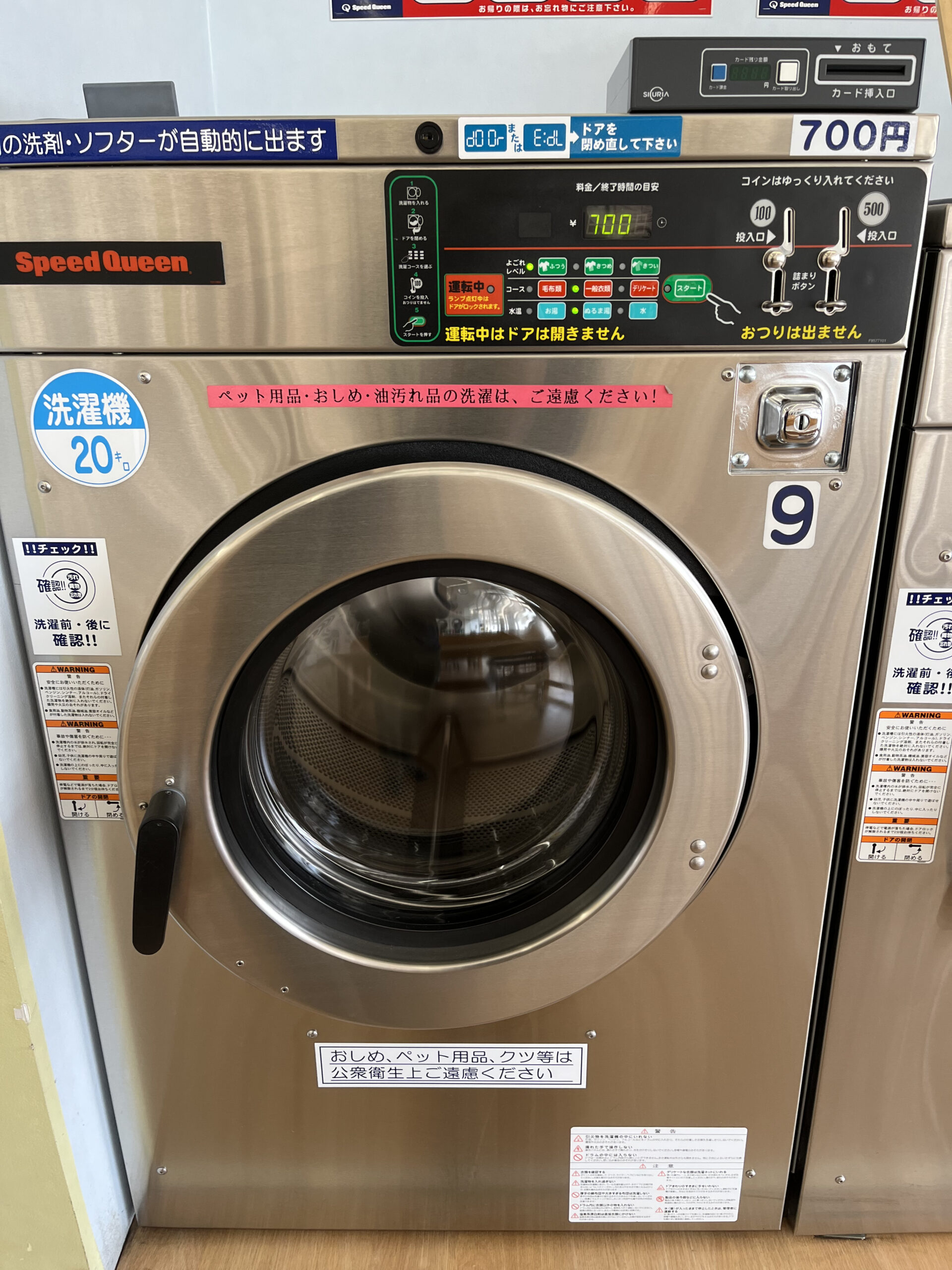
When you put in your load, the machine locks. It is considered polite to hang your laundry bag on the machine you are using, for two reasons. The first is that it shows that it is yours; the second is that if the coin laundry is very crowded, it allows another customer to put the things in the bag, and use the machine; you would only do this if a relatively long time passes from the machine stopping until nobody picks it up.
Sneaky clean
The small washing machines, big drum-loaded washers, and the dryers are normal parts of the compliment of a Japanese launderette; but there is at least one more type of machine you may encounter in addition: The sneaker washer and dryer.
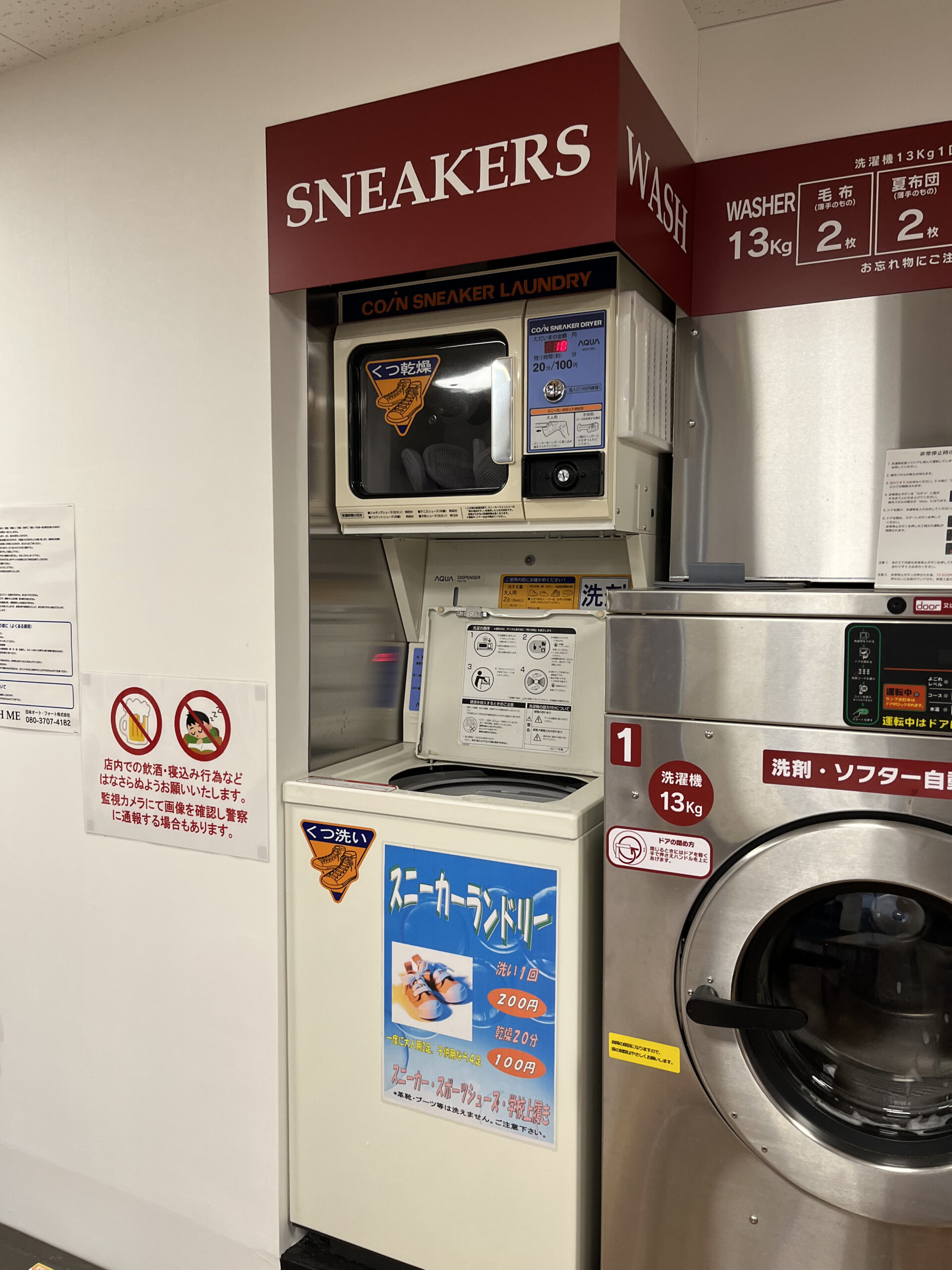
In summer, your sneakers will suck up sweat (as they are designed to); after a few days in the heat, the bacteria from your feet have been feasting so much on the nutrient broth that they start to exude byproducts. Which are smelly.
To freshen up your sneakers, many laundromats in Japan have specialized machines which wash the sneakers and dry them afterwards. It costs around 300 yen, and not smelling like you stepped in elephant poop is worth it.



